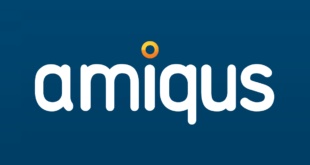The overall games market (software, hardware and accessories) declined six per cent in units and climbed 12 per cent in revenue during 2014.
Revenue growth came from console hardware (up 46 per cent), which needs little explanation in the first full calendar year for PS4 and Xbox One. Those two consoles accounted for 85 per cent of all console revenue in 2014.
Growth also came from gaming accessories (up seven per cent). To understand revenue growth within gaming accessories we need to look at a specific breakdown, since the sector covers a huge amount of product groups:
- All handheld accessories (Nintendo and Sony products) were down 23 per cent and accounted for just four per cent of all gaming accessory revenue in 2014 (excluding digital content). This figure is down from six per cent in 2013.
- Generation 7 accessories (PS3, Xbox 360 and Wii traditional gaming accessories and hybrid toy characters, excluding digital content) were down 41 per cent and accounted for 23 per cent of all gaming accessory revenue in 2014 (excluding digital content). This figure is down from 43 per cent in 2013.
- Generation 8 accessories (PS4, Xbox One and Wii U traditional gaming accessories and hybrid toy characters, excluding digital content) were up 217 per cent and accounted for 37 per cent of all gaming accessory revenue in 2014 (excluding digital content). This was up from 13 per cent share in 2013.
- Fuelling growth for traditional gaming accessories (all gaming accessories, excluding digital content) were extra controllers, battery packs and docks, and headsets. These three product groups accounted for 57 per cent of all traditional gaming accessories (up from 52 per cent in 2013). It is clear from this result exactly what kind of products new console owners require.
- Digital content (Xbox Live, PSN and eShop digital content and online time as sold by retailers, excluding Microsoft, Sony and Nintendo digital delivery via their own websites) was up six per cent. Digital content accounted for 37 per cent of total gaming accessories in both 2014 and 2013.
- Hybrid toy (single characters, combination packs and characters split from software starter packs) revenue decreased two per cent with overall toy revenue share accounting for 25 per cent of all gaming accessories (excluding digital content). This was down from 28 per cent in 2013.
"29 per cent of annual console software
units were sold in December 2014, something not
seen since 2000."
Dorian Bloch, GfK Chart-Track
Entertainment software revenue decreased seven per cent overall.
Console software decreased six per cent, and if we remove handheld software (which decreased 34 per cent) then home console software fell just two per cent.
Generation 8 (PS4, Xbox One and Wii U) software increased 281 per cent and accounted for 56 per cent of all entertainment software revenue (up from 14 per cent in 2013).
Overall, Generation 8 software, console and accessory sales accounted for 67 per cent of the entire revenue market in 2014, up from 31 per cent in 2013.
Last year’s Q4 was especially interesting. It was the highest Q4 percentage in terms of new games released during a calendar year (38 per cent). Note also that 2014 saw the lowest number of games released in a year, which helps explain this.
Furthermore, in terms of games sold, Q4 2014 accounted for 50 per cent of all unit sales from the year for the first time. 52 per cent of 2014’s entertainment software revenue was achieved in Q4. For revenue, it has been around 51 to 52 per cent for the last four years, except in Q4 2013 where it dropped to 49 per cent due to the GTA V effect. (The game came out in September.)
December 2014 was also remarkable; 28 per cent of annual entertainment software units were sold last December, something not bettered since 1998 (when it was 30 per cent). 29 per cent of annual console software units were also sold in December 2014, something not seen since 2000.
Of course, it’s important to consider the huge effect of Black Friday. Black Friday took place on November 28th, and was actually part of Week 48 – the first calendar week of December 2014.
With regards to units sold, Black Friday was one of two dates in 2014 that managed to break into the Top 20 best-selling entertainment software days of all time. The other was September 26th – FIFA 15’s launch date.
In terms of revenue, Black Friday 2014 was also the 13th-biggest entertainment software day on record. The Black Friday sales week was the biggest week of 2014 for entertainment software and console hardware (units and revenue), and the second biggest week of 2014 for gaming accessories (units and revenue) – Week 52 was No.1 for accessories because of a huge surge in digital content and online time sales.
NOTES
All 2014 versus 2013 comparisons are based on revenue data, unless stated otherwise. It is important to note that these estimates are for the UK retail physical market, extrapolated at different rates either by year or by type of product or by specific format.
These estimates cover entertainment software, console hardware and gaming accessories.
Gaming accessories does not include PC gaming hardware retail upgrades such as graphics cards, hard drives, standard non-gaming keyboards and mice, webcams, soundcards, speakers or network devices and adaptors.

 MCV/DEVELOP News, events, research and jobs from the games industry
MCV/DEVELOP News, events, research and jobs from the games industry



